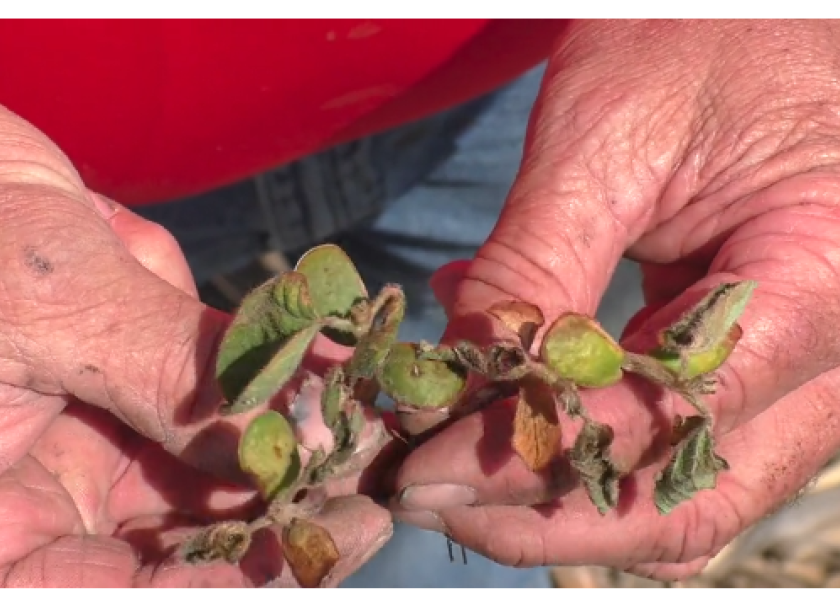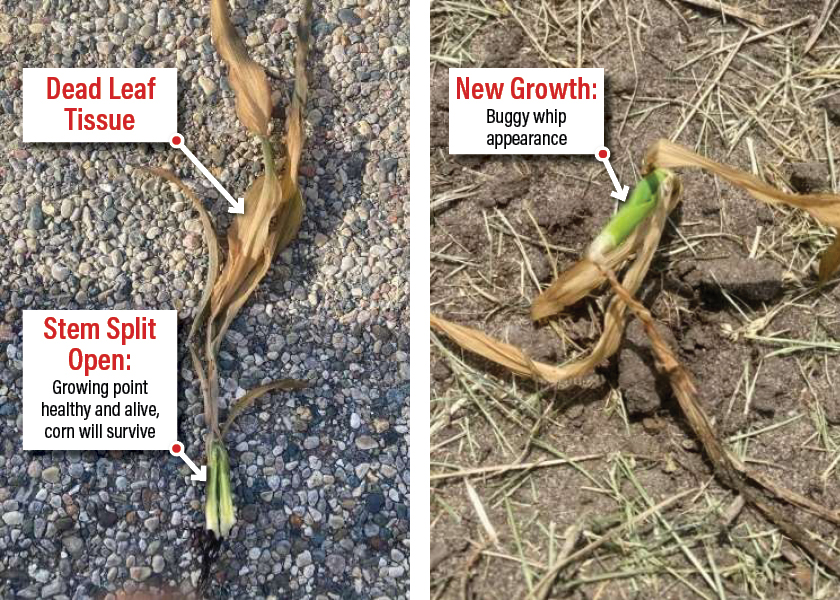Did Frost Bite Your Corn Or Soybeans? Use These Tips to Assess Damage

The frigid air that blew through the northern Corn Belt and Mountain States over the weekend left its mark on corn and soybean fields. From burnt leaf tissue to blotchy, curled leaves, Farm Journal Field Agronomist Missy Bauer shares these tips to evaluate frost damage.
To ensure the growing point is OK, Bauer says to split open the plant from the base of the crown up.
“If the plant is a bright white to yellow color (not brown or mushy) then it should keep growing,” she explains. “Don’t be alarmed if the plant has some buggy whipping [twisted whorls] – that’s just the new tissue replacing the old tissue.”
If you see a field with some blotching and leaf damage — a white or greyish cast as you drive by — that is the damaged soybean tissue and leaves that have rolled or flipped over.

“Pay particular attention to the low-lying areas and sandier soils,” she says. “No-till fields, in many cases, are worse.”
Be diligent about scouting soybean fields to evaluate stands and determine final plant population, Bauer advises. “I am most concerned about fields already marginal on stand counts due to prior frost events,” she adds.
Bauer is comfortable keeping stands of 65,000 to 70,000, if they are uniform. To determine plant populations, follow the instructions outlined in this Purdue University Extension tip sheet to use a hula hoop for 15” and narrower rows and a yardstick for 20” and 30” rows. The Extension bulletin also has information on percent of normal yield based on final populations, which is helpful when making replant decisions.

When counting plants be sure to only count ones that will survive, Bauer adds. If the unifoliate leaves are burnt off but the cotyledons are healthy, those plants will survive. If a plant is burnt below the cotyledons, it won’t survive. If the stem below the cotyledons is not firm and doesn’t have good turgor pressure, it will also likely not survive.
At this point, Bauer says, it’s important you don’t add any more stress to corn and soybeans already under stress.
“We recommend holding off on applying your post-emergent herbicides for 120 growing degree days (or heat units) from the time of the frost,” she says. “Soybean fields that have good stands and limited frost damage can be rolled. Wait until after the 120 growing degree days and the proper growth stage on fields with heavy frost damage where plants must regrow from new growing points.”







